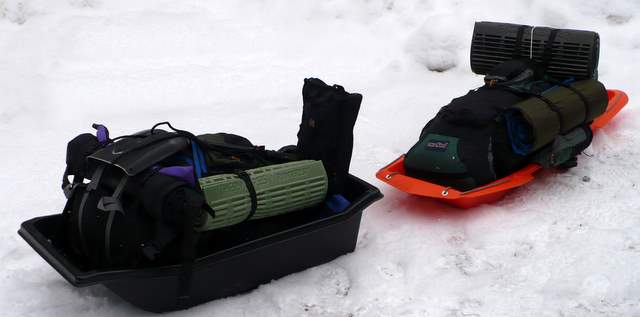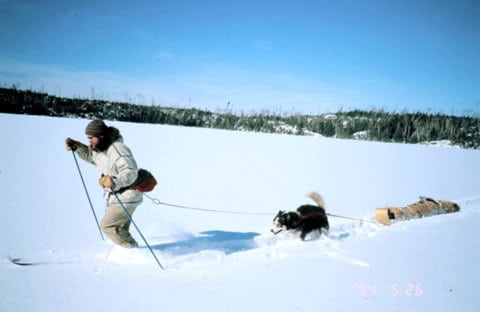WinterCampers.com Web Pages
- About WinterCampers.com
- Blog
- SnowShoes
- The Lighter Side of Winter Camping
- Winter Camping Articles
-
WinterCampers.com Home
- Favorite Links
-
Gear Reviews
- Beyond Clothing’s Cold Play Soft Shell Jacket
- Black Diamond Megamid
- Columbia Kazoo Hat
- Design Salt Cocoon Silk Mummyliner
- Kifaru Tipi
- Magnesium Fire Starter
- New England OverShoes (NEOS) for Winter Camping
- Sample Gear List
- Swedish Fire Steel Fire Starter
- The 10 Essentials
- Trail Stove by Stratus
- Western Mountaineering Puma Sleeping Bag
- What’s in my pack?
-
Winter Camping Skills
- How to Build A Quinzee
- How To Start Winter Camping
- LNT for Winter Campers
- Sleeping Warm
- Snow Caves And Other Shelters
- Toboggans, Snow Sleds and Pulks
-
Trip Log and Photos
- 1999.12 Indian Pass…The “I Am Not Going To Lie To You” Trip
- 2001-01 Tirrell Pond
- 2004-02 Dogsledding in Ely, MN
- 2009-01 Dead Vly
- 2009-02 Cascade Pond
- Using Canister Stoves
- Winter Camping Poo: Pack It Out
- Winter Camping Recipes
- Winter Camping Tips
- Winter Camping Video
Toboggans, Snow Sleds and Pulks
We have mixed experiences using sleds to transport winter camping gear. In the right circumstances a sled offers advantages over backpacking. It easy way to move a lot of gear – up to 18,000 cubic inches and 200+ lbs – more than one can comfortably stash in a backpack. So if you are setting up a base camp, hauling supplies to a cabin or outfitting a scout troop, you might consider a sled. One can just hook into the harness and pull your winter gear rather than carry it.
Sleds work best in the right circumstances. This usually means adequate snow cover and a reasonably level, wide trail. In steep terrain a sled benefits from lashing the gear inside and stiffening of the sleds and/or harnessing. The addition of a rigid harness system is what differentiates a sled from a pulk.
Toboggans
Some winter travelers prefer the traditional toboggan design. Toboggans carry large loads, fit in a set of snowshoe tracks and due to their length they are very stable. They don’t work well in steep terrain or with cross-country skiers. Honestly, I have never used a toboggan, but the Canadian-based WinterTrekking has a nice article that gives a lot of information on toboggans.
Sleds
Our 1st sled was a $12 sliding model from the local Super-Mart that we modified with lashing, but they proved to be thin and the plastic cracked under the abusive conditions of winter camping. Carrying a broken plastic sled out of the woods is not fun. Unless you are only going in your neighbor’s woods, they are not to be recommended.
A more durable sled is the 5 lb, bright orange Paris Expedition Sled, which I have used as-is. The Paris Expedition Sled is made of .125 mm linear polyethylene and it has metal grommet reinforced tow holes with additional holes along the side for a towing harness and/or lashing. It tends to track straight and is a tough sled for the price. It is also a popular model for modifying into a home-made pulk. These sleds can be found at local hardware stores or ordered through Walmart or through REI ($33).

Last year I purchased a small Otter sled at Gander Mtn. Otter Outdoors offers 8 different sizes of their sled. Originally marketed for ice fisherman (some models even come with ice shack accessories), it supposedly will not crack even at -40 degrees. The sleds are deep (10-14″) and stable. It is my new favorite winter camping sled when a sled is warranted. Cabelas sells two small Jet Sleds ($25) that look like the Otter Outdoors design.
Commercial pulks
At the high end are commercially available pulks such as the ones from Granite Gear, Kirafu, Snowsled, WildernessEngineering or Fjellpulken.
- The Granite Gear Expedition sled weighs 17 lbs and has a capacity of 15,000 cubic inches. With a crossed fiberglass stay system, flexible nylon connecting rods, and a zero play full body harness, this sled pulls and turns easily. The lightweight hull offers a low coefficient of friction (drag) over the snow. There is a durable cover with 3 compression straps to secure gear and a full-length zipper for access. The hull has molded-in ski runners and there is a brake prevents sled from sliding backward on slopes. The harness poles are constructed in such a way as to allow for hip rotation.
- Kirafu offers three models: Expedition ($825, 15lbs/18000 cubic inches), Armadillo ($638, 12 lbs/12000 cubic inches and Military sleds (MILSPEC verisons).
- SkiPulk offers two high end fiberglass sleds: the Weekender and the EWS Expedition Pulk and set ups for Paris Expedition sleds, and a mid-level Snow Clipper
- Snowsled makes a variety of pulks for short 2 week expeditions to lengthy multi-week trips, adventure racing models and day trip versions.
- WildernessEngineering offers an 11,000 BaseCamp Pulk and a 6 page instruction booklet.
- Fjellpulken from Lillehammer, Norway offers a broad assortment of models for children, disabled, touring and expedition, rescue and dog racing. You can download a brochure here.
-
Northern Sled Works offers the Siglin Sled and Siglin Pulk as well as models for towing behind a snowmobile.

Build your own pulk
If your winter camping doesn’t warrant an expedition pulk there are resources for making your own pulk. Some that we like are:
- My Cheap Snow Camping Sled by Michael Krabach who starts with a sled model called the HO! by Recreation Inc.
- Build yourself an arctic sled
- Mark Harris has a simple, cheap and quick to build design.
- Penob Bob gives instructions for modifying a Paris Expedition Sled into a pulk
- Here is a good discussion thread with pictures from individuals making their own sleds
- PiceaRubens offers modifications to the Penob Bob design.
- Mad River Rocket offers a pulk kit, material list and instructions.
- Or visit skipulk.com and download the Pulkbook



